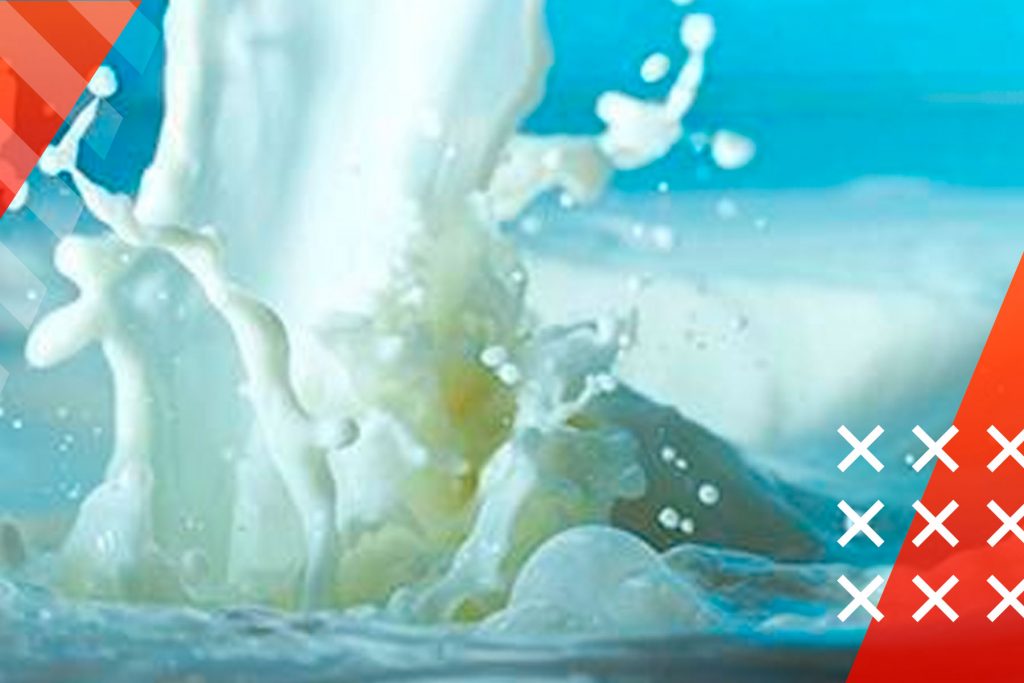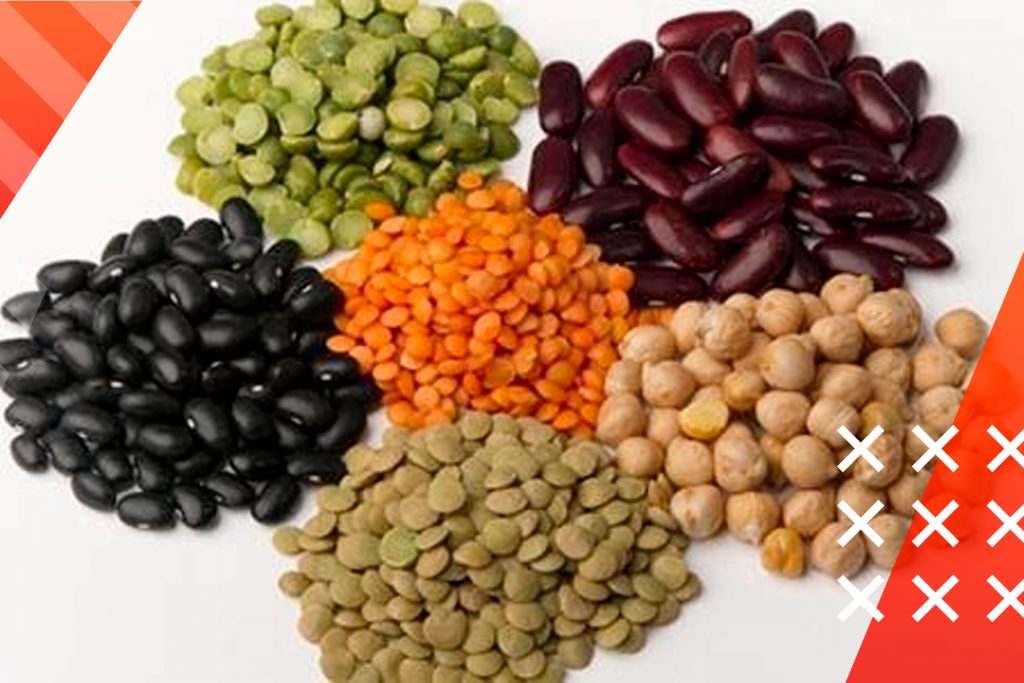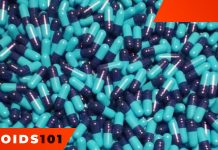There are 6 main types of protein, among which are: Chicken egg proteins, whey proteins, Casein, Soy proteins, Vegetable proteins and fish proteins.
Egg Whites
All proteins are evaluated relative to the whole protein of chicken eggs, which is considered a reference and is easily absorbed by the body. Chicken egg protein is almost 100% albumin. The yolk contains seven other protein compounds (including albumin).

However, a wide variety of protein compounds in chicken eggs is a reason to consume this product in adequate volumes. Experts do not recommend including a large number of raw eggs in the diet, as they contain an inhibitor of the trypsin enzyme, which slows down the digestive process. The avidin protein contained in the yolk, in combination with the biotin (vitamin H) in the body, forms a substance that is not digestible and is not absorbed by the body. Chicken egg is recommended to be cooked before consumption, the trypsin inhibitor is destroyed at 70 ° C, and active biotin is released from the biotin-avidin complex at 80 ° C.
Studies on the effects of egg white on the human body have been carried out by scientists from Taiwan and Japan. In this study, three groups of women were selected who wanted to participate in this experiment. Women were healthy, save for the high cholesterol levels in the blood. The participants of the experiment consumed dietary food, the energy value of which did not exceed 1750 calories per day. The daily protein intake was at 70 g. 20% of the total calories received were in the form of fats. Participants in the first group of the experiment received 30% protein from egg protein, participants in the second group received protein from cheese and women from the third group – from tofu. During the experiment, the weight of the subjects and their physical activity did not change. Upon completing the study, it was found that women who received protein from tofu and egg protein, had blood cholesterol levels became lower, and the number of useful lipoproteins increased. Women that were taking protein in the form of cheese had blood cholesterol levels increased. The experimental results confirm the positive effect of egg white on the human body.
Along with this, scientists were interested in how the whole egg affects the body. In 1996, the Annals of Nutrition and Metabolism published the results of a study that showed that a group of subjects who ate whole eggs during the day had lower HDL levels. In itself, it serves as one of the reasons for the development of atherosclerosis in humans.
However, eating whole eggs is not always beneficial, because the presence of a large number of polyunsaturated fats causes increased oxidation in the body. Polyunsaturated fats, including Omega-3 UFAs, which are contained in fish and flaxseed oil, are especially prone to oxidation. However, this process can be prevented by eating antioxidants. Selenium and beta-carotene, vitamins C, E, PP, etc. inhibit oxidation and provide for stabilization of polyunsaturated fats.
Cholesterol is found in cell membranes. Its deficiency in a young body leads to many problems, including a delay in physical development. 90% of bodybuilders under the age of 30 do not have problems with high blood cholesterol. It means that the formation of pathology in fat metabolism, manifested in the form of hypercholesterolemia, is not possible in their cases. Bodybuilding is aimed at increasing the amount of muscle mass, so cholesterol is used in significant quantities in their bodies. Bodybuilders take vitamins A, C, and E, which are antioxidants that ensure safety while eating whole eggs regularly. The amount of fat contained in the egg is small and will not affect muscle growth. Also, egg yolks contain useful minerals, bioactive substances, and vitamins.
Thus, eating whole chicken eggs is especially useful when gaining muscle mass. When losing weight, only whites are included in the diet, abandoning the yolk. Whole egg protein and egg albumin are used to make nutritional supplements for athletes. Such sports nutrition is considered the most high-quality and effective because it contains all the useful substances and eliminates all the possible disadvantages that whole eggs have. Since the process of assimilation of egg white is somewhat slowed down, it becomes possible to include it in the diet while reducing body weight without fear of slowing the weight loss down.

Whey Proteins
The main whey proteins are lactoglobulin, lactalbumin, and immunoglobulin. Whey proteins have the highest digestibility among whole proteins in the human body, as they break down most quickly. Within an hour after consuming whey proteins, the concentration of peptides and amino acids in the blood rises. In this case, the stomach’s acid-forming function does not change, which eliminates the formation of gases and the digestive tract’s disruption. About 14% of whey proteins are hydrolysates of amino acids, di-, tri- and polypeptides. With their help, the digestion process, the synthesis of many important hormones and enzymes, lowering blood cholesterol levels are accomplished.
The amino acid compositions of human muscle tissue and whey proteins are almost identical. The essential amino acids and branched-chain amino acids contained in whey proteins (leucine, isoleucine, and valine) are superior to other animal and vegetable proteins in their quantity.
Canadian scientist Gustavo Bounous and colleagues at McGill University have proven that whey protein is the most active accelerator of cellular and hormonal reactions. The immunostimulating effect of whey protein is associated with the rich content of the essential amino acids. Moreover, whey protein can increase the level of one of the most important antioxidants in the body – glutathione. Whey protein is significantly superior to other types of proteins in its function of providing athletes with protein – egg, vegetable, soy, and fish. In the course of the experiments, it was found that the optimal content of whey protein in special food additives is 60-65%. Increasing the protein content requires the introduction of additional vitamins and minerals.
Sweet milk whey, obtained in the production of rennet cheese, is the primary source of whey protein. But due to the presence of a large amount of milk sugar (lactose), which sometimes causes intolerance to dairy products, and low protein content in it, pure milk whey is not used for the production of protein supplements.
Whey Protein Concentrate
The concentrate is the first among the extracted forms of whey protein. Whey is passed through incredibly tiny holes in a ceramic membrane. Fat molecules and lactose carbs pass freely through these holes, while the remaining protein fractions, which are much larger, are stopped. The difficulty lies in the fact that technical capabilities do not allow making holes of the same size. Therefore this type of filtration cannot be considered clean. The heterogeneous mass deposited on this kind of filter contains from 35% to 85% protein. The impurities of fats and lactose in it can cause increased gas formation in the gastrointestinal tract. For this reason, the concentrate is the cheapest form of whey protein, among other sports nutrition products. The concentrate can be considered an alternative option solely due to insufficient financial capabilities.
Whey Protein Isolate
Isolate is a substance that is much cleaner than concentration. The method of long filtration or ion exchange is used to obtain the isolate. It results in the formation of dry mass, consisting of more than 95% protein. Lactose and fats are almost absent in the isolate, which indicates its superior ability to compensate for the amino acid deficiency both before and after training. The indisputable advantage of the isolate is its low price compared to the hydrolysate, making it more accessible to the general public. Some manufacturers sell mixes of three types of protein (concentrate, isolate, hydrolysate), passing it off as whey protein. Therefore, the amount of inexpensive concentrate on such products is very high and reaches 60-70%. Naturally, it is better to search for supplements in which the isolate prevails or is the only ingredient.

Whey Protein Hydrolysate
Hydrolysate is the most expensive protein. Its high cost is its main disadvantage. This type of protein is obtained by hydrolysis, during which large protein molecules are broken down into separate fractions. Due to this, the protein is instantly absorbed and penetrates the muscles almost immediately.
However, not all whey protein hydrolysates are of high quality. Nowadays, there are many types of hydrolysis equipment that do not always strictly comply with the technology of protein production, which negatively affects its quality and allows the manufacturer to cut the expenses significantly. Experts believe that there are many types of hydrolysates containing not more than 50% protein fractions.
The sports nutrition market of today can present a wide range of various forms of protein-containing products. First of all, these are protein shakes with different tastes. They can be sold both in ready-to-use form and in powders that require preparation. Confectionary is equally popular: chocolate, energy bars, protein pastes, cookies, etc. Such products can be bought in specialty stores.
In addition to sports protein, mixtures of amino acids necessary for its absorption are offered. They are made in the form of powders, liquids, and even injectable solutions. Along with amino acids, there are products offered that contain a complex of several components for different purposes. Such amino acid complexes are most rapidly absorbed by the human body, as they are practically already digested protein. For example, BCAA amino acids (which enhance muscle metabolism), a mixture of L-arginine, L-ornithine, and L-lysine (which stimulates the secretion of GH), or the L-glutamine amino acid (which protects muscle tissue during intensive training), etc.. Amino acid complexes are, in fact, already practically digested protein. Therefore, they are absorbed in a glance.
Casein
As a rule, casein is added in a mixture of baby food, which, according to modern concepts, is considered biologically justified. When it gets into the stomach, casein is getting curdled, turning into a clot that is digested for a longer time, providing a relatively low rate of protein breakdown. It leads to a stable and uniform intake of amino acids in an intensively growing child’s body. In case of disruption of this assimilation rhythm (the use of mixtures based on whey proteins), the child’s body does not have enough time to absorb an intensive flow of amino acids at this stage, which can lead to various kinds of deviations in the child’s development. Therefore, nutritionists recommend using casein-based mixtures for infants. As for adults, the low digestibility, as well as the slow passage of casein clots through the gastrointestinal tract, are unacceptable, especially with increased physical activity. Therefore, food supplements created based on casein, in all probability, have rather low efficiency.
However, a possible solution is the use of protein compositions based on casein and whey proteins. After appropriate studies, the maximum protein efficiency coefficient and the corresponding proportions of whey proteins and casein were determined. This proportion turned out to be a ratio of 63:37, with a protein efficiency coefficient of 3.49. The obtained value of biological value for this ratio of proteins turned out to be very high and, judging by the literature, not inferior to those for other high-value proteins of animal origin.
As for digestibility, it increased proportionally to the raise of the content of whey proteins. The data obtained confirmed the well-known fact of better digestibility of whey proteins by digestive enzymes compared to casein.
Soy Protein
Soy protein is well balanced in amino acids, including essential ones. The main advantage of soy protein is that it is not of animal origin, and it is excellent for people with lactose intolerance. Soy protein contains such valuable components as saponins and phytosterols. Saponins support the immune system and lower cholesterol. Phytosterols also maintain normal cholesterol levels. From the soy, the body receives vitamins (E, all group B vitamins) and minerals (potassium, phosphorus, iron, zinc) necessary for normal vital function. Soy is very beneficial for women’s health – this product prevents osteoporosis in the elderly and reduces the risk of developing breast cancers. For men, soy is also useful because it has a beneficial effect in the case of prostatitis.
Supplements may include in their composition such options as soy flour (protein content 40-50%), soy concentrate (protein level 65-75%), and soy isolate (more than 85%). No matter how perfect soy may seem at first glance, it also has its drawbacks. Soy protein contains trypsin, a digestive enzyme inhibitor, which is a severe factor against the proper digestion of the product. The amount of trypsin may vary depending on the processing technology of soybeans. The inhibitor can be eliminated by additional processing of the protein with enzymatic hydrolysis. This procedure is carried out by electrophoresis with pancreatin and takes fifty minutes. There is another crucial point – soy protein can damage the walls of the small intestine. These negative factors influence the fact that the introduction of soy protein in food additives is minimal.
Soy Protein And Testosterone
On the Internet, one can often encounter information about the supposedly negative effect of soy on testosterone levels in men. Only two studies (among a large number of studies conducted on this topic) found a connection between a decrease in testosterone levels and soy consumption. In one of them, the consumption of isoflavones among the study participants was particularly high, four times the amount normally consumed by men in Japan. The researchers also did not make comparisons with the control group – men who did not consume soy. Therefore, it cannot be argued that there is a difference between the two groups.
On the other hand, studies show the absence of any effects on the testosterone levels caused by the consumption of soy. A recent analysis of 32 scientific studies showed that neither soy protein nor isoflavones have any effect on testosterone levels. Scientists analyzed the data using several different statistical models. In all cases, similar results were obtained. Moreover, studies that were published too late to be included in this analysis showed the same thing – that soy does not affect testosterone levels. Among the many studies proving that soy isoflavones do not affect testosterone levels, there is one more that almost cast a shade of doubt on this fact.
The study was conducted at the University of Medicine and Dentistry of New Jersey and published in 2007. In this project, 13 men aged 25 to 47 consumed 56 grams of soy protein a day for four weeks. Testosterone levels were measured three times in four weeks – before the start of the study, after the first two weeks, and at the end of the study. At the end of the study, after the final measurement, scientists reported a 19% decrease in testosterone levels for subjects. Later, it turned out that a typo was made when publishing the results, and the facts were framed up. The authors of the study concealed the fact that there was a man among the subjects, with testosterone levels twice as normal. It was due to a decrease in his testosterone level that such data was obtained. Besides, the concentration of testosterone in him continued to fall after the termination of the study and the use of soy protein. Later, the authors of the study admitted that if it were not for the drop in testosterone levels in this man, they would have nothing to publish.
As for today, a meta-analysis of scientific data confirms that soy does not inhibit the secretion of testosterone in men. Soy protein can serve as an alternative to the protein of animal origin for men and women, is an effective means of lowering bad cholesterol, preventing cancer and osteoporosis, but is less useful for gaining muscle mass compared to whey. Also, the absence of an effect on testosterone level does not indicate the absence of estrogenic activity, which can lead to hypogonadism and even erectile dysfunction.
Vegetable Proteins
When it comes to vegetable foods, the proteins obtained from them are incomplete, but being combined, they can end up being a complete protein. The combination of legumes and grains is especially effective; in it, the complete protein content is highest. Unlike other plants, soybeans contain a complete protein that is not inferior to whey and egg – their PDCAAS values are the same.

The digestibility of vegetable protein can be quite low, due to several reasons:
- vegetable cells have a thick membrane, which is often not digestible by gastric acid;
- some plants (like legumes) contain digestive enzyme inhibitors;
- vegetable proteins are challenging to break down into amino acids.
Fish Proteins
The use of fish protein isolates in the diet of athletes was considered at some point. The research was conducted at the Research Institute of Food Hygiene in Kyiv. The digestibility of fish isolate, fresh fish, and casein was compared. It was found that the fish protein isolate is split into amino acids even slower than casein. The breakdown of the isolate to peptides did not stop even three hours after the administration of the protein.



